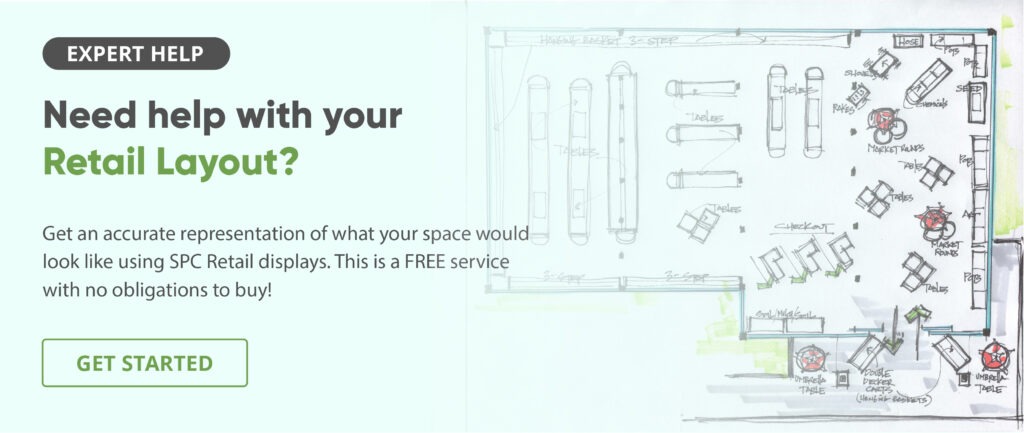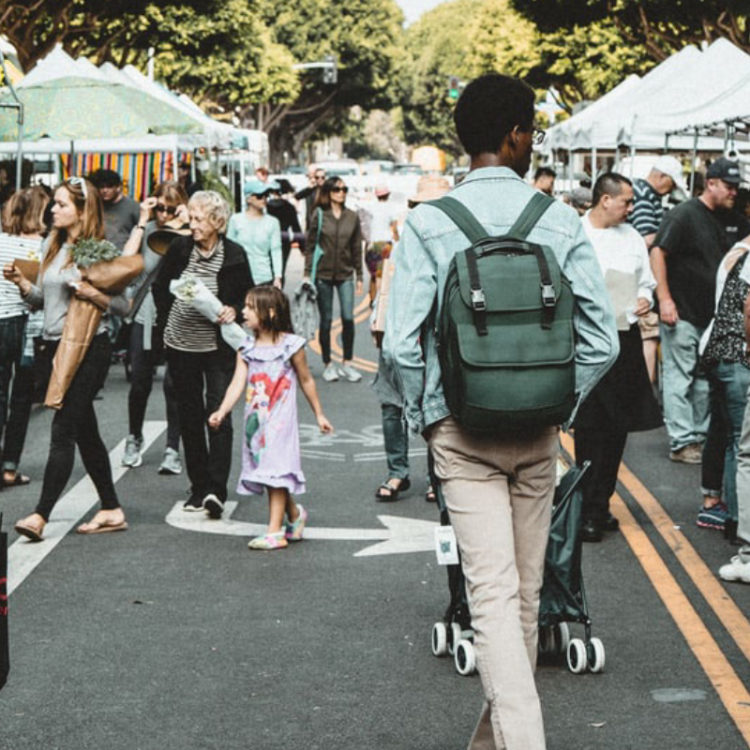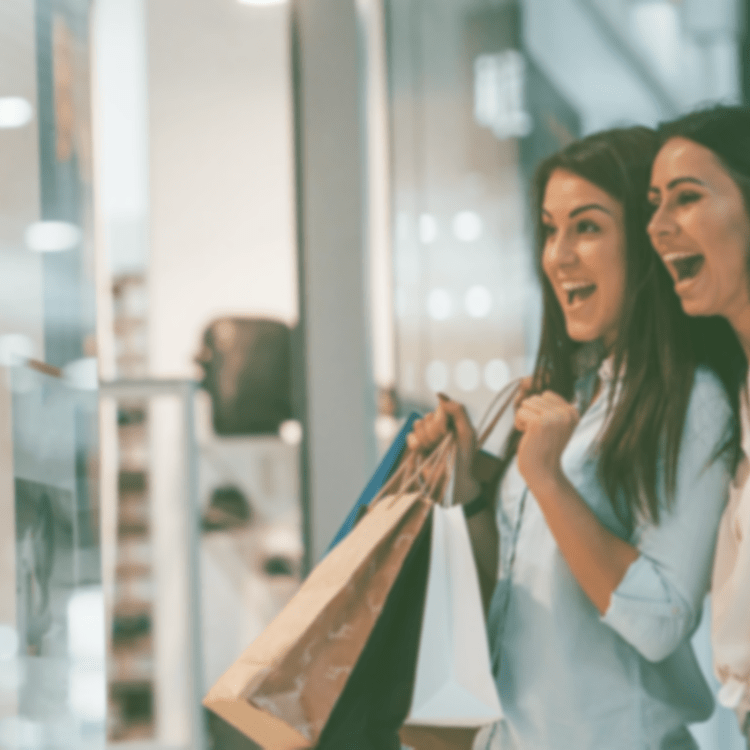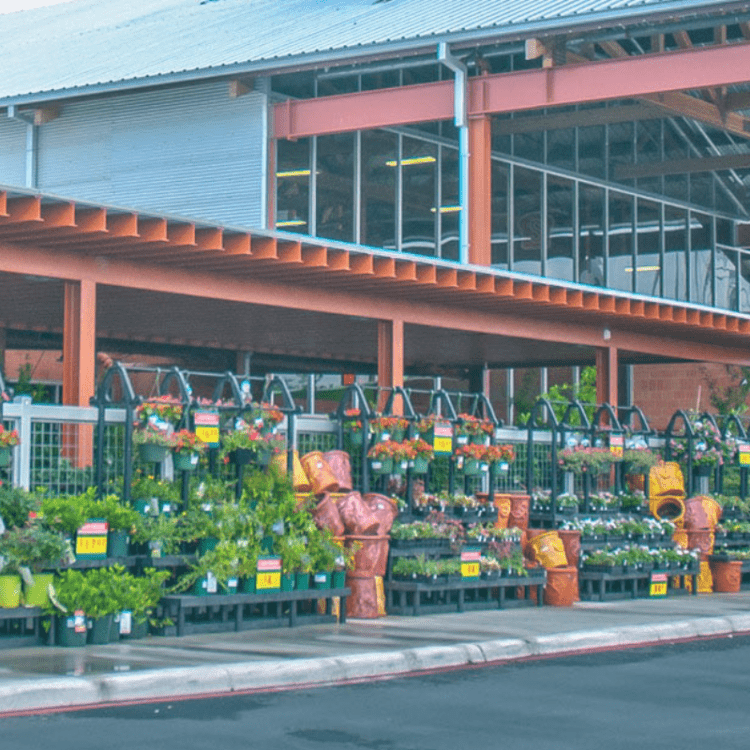Why Customer Flow Matters in Store Design
When you walk into a retail store, you expect to see a few familiar items no matter what type of store you’re shopping: rows of shelves and racks, a checkout area, specialty displays, end caps, and plenty of products to fill them. But these fixtures and products weren’t placed where they are by accident. Rather, savvy retail store owners design their layouts based on customer flow — the paths along which customers move throughout the store.
Customer flow is both an art and a science. Here’s why it matters in retail store layout design.
What is Customer Flow?
We define customer flow as the movement of customers through a store. Retailers place their fixtures and products in a way to guide the anticipated customer journey. They take into account how customers are accustomed to shopping as well as how they want customers to experience the store.
Research shows that the majority of customers enter a store and turn right, a process called invariant right. Retailers keep this in mind when designing their merchandising and layouts. By knowing how customers are most likely to travel, you can place essential items (re: best sellers and high-margin products) where they’re most likely to see them.
The Two Sides of Customer Flow
Customer flow applies to the entire store, from their initial entry to their final experience (usually the checkout process). It encompasses both the physical and the psychological journey the customer takes through the store. We refer to these as the “designed flow” and the “behavioral flow,” respectively.
When thinking about the customer experience, we intertwine these two concepts.
Designed flow represents the pathways we create to guide customers through the space. These paths provide cues as to what’s important, where to go, and how to explore the store.
Behavioral flow refers to the individual’s experience. Each person has a unique mental state when shopping in a store. They’re focused on the goal that brought them there and tend to drown out everything else that doesn’t relate to that goal. Their motivations and decision-making approaches govern their in-store experience.
Why is Customer Flow Important?
Customer flow has a direct impact on a retail store’s success. Let’s look at how you can use customer flow to maximize revenue and profit.
Improved customer experience
Retail stores need to be able to deliver on customers’ needs. If they can’t find what they’re looking for, they’re likely to shop somewhere else, right?
Customer flow helps you think about your store’s overall navigability. What does shopping in your store feel like? Are items easy to find? Are there bottlenecks in areas during busy times? This is why both types of flow need to interact with each other to deliver a seamless experience.
Greater customer engagement
Shopping in-person is a sensory experience, something that online channels are lacking. Retailers want customers to see, feel, smell, and hear (and taste, when appropriate) the products. Greater engagement can lead to higher sales. When applied to customer flow, retailers need to think about their product mix, displays, signage, and even the interactions with associates.
Customer loyalty
Also, part of the customer experience is the triggers that make a customer return to your store. Things like easy navigability, friendly associates, a clean layout, and an overall pleasant environment can leave a lasting impression in your shoppers’ minds. A positive shopping experience builds loyalty and will ultimately increase sales in the long run.
Impulse buying
The emotions of your customers and the store environment itself will play a role in increasing the average ticket size. Items placed strategically in the store are more likely to be picked up by customers who didn’t intend to buy those items in the first place. Knowing where customers make those in-the-moment decisions (and the types of things they buy on impulse) can help you maximize the customer flow.
Greater share of spend
Increasing sales isn’t just a one-and-done activity. The more times you can earn a customer’s repeat business, the greater share of spend you’ll receive. This is a huge factor in encouraging more customers to choose you vs. a competitor.
To make a customer feel comfortable, make aisleways large enough to feel like they have space to shop, but not too large where they zoom through without looking at anything. Also, think about how lighting, music, and the general ambiance will affect the shopper’s mood. Creating an environment that’s a pleasure to shop in will help you stand out against other retailers.
Reduced theft
Store layout also plays a role in-store security. Knowing shopper behaviors and identifying potential opportunities for theft to occur should inform your layout strategy. Some factors to consider are the size of your store, placement of the checkout areas, high-value product locations, and less heavily trafficked areas.

Putting Customer Flow into Motion
Customer flow is easy enough to understand. But how should retailers go about mapping out their own customer flow? And more importantly, how will they know their customer flow is working well?
That’s where customer flow tracking and analysis come in. Customer tracking tools can help retailers see how their customers are traveling through the store.
Some metrics and data that tracking tools can capture include:
- Shopper Traffic to store (# of Visitors)
- Proximity Traffic (% Capture Rate)
- Choosing Physical Store Site (Trade Area Analytics)
- In-Store Product Positioning (Path to Purchase)
- In-Store Employee Locations (Service Productivity KPIs)
- In-Store Live Map & Product Information (Path Analysis)
Understanding customer flow gives retailers crucial information on flow patterns, the number of visitors, areas of the store they frequent and ignore. It also helps you understand how displays and retail staff are influencing the consumer experience.
What’s more, you can use this data to make improvements to your in-store layout and maximize the shopping experience.
Wrap Up
Customer flow in a retail store has a lot to do with your success. By guiding shoppers through your store in a way that makes sense to them and draws attention to what you think is important, customers can get to know you better, see more of what you sell, and have plenty of reasons to return.
Learn more about how you can use displays to facilitate customer flow.


